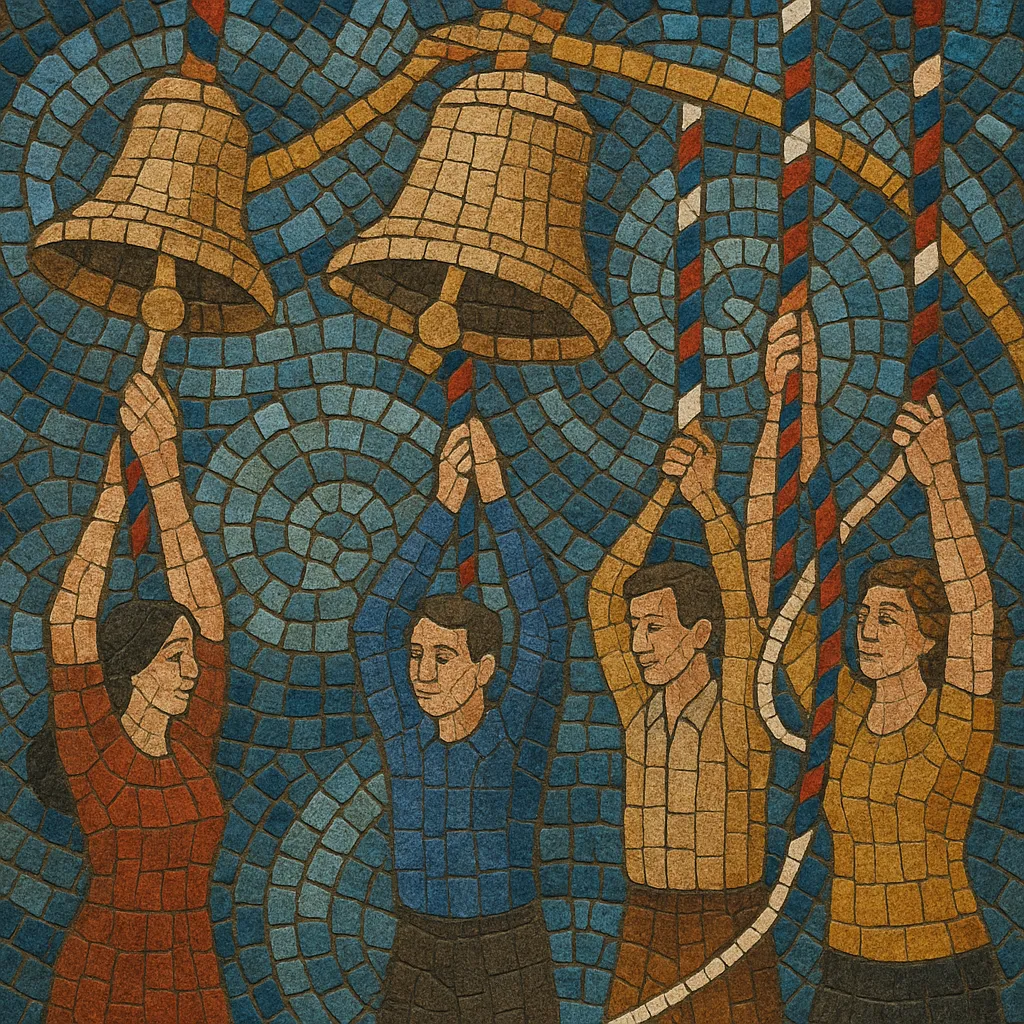
Change ringing is the art of ringing a set of tuned bells in continuously varying orders called "changes," rather than in conventional melodies. The bells are mounted for full-circle ringing, allowing precise control of timing and enabling complex, mathematically structured sequences.
Typically performed in English church towers (and also on handbells), change ringing is ensemble-based and highly coordinated: each ringer controls one bell, and together they execute preset methods—rule-based patterns such as Plain Bob, Grandsire, Stedman, and Cambridge Surprise. The result is a shimmering texture of evenly spaced strikes that emphasize rhythm, pattern, and permutation over tune and harmony.
Change ringing arose in England after the development of full‑circle ringing mechanisms in the late 1500s, which gave ringers fine control over the timing of each strike. By the early 1600s, ringers began exploring systematic permutations of bell orders—"changes"—as a musical and social practice within parish life.
The art was first codified in print by Fabian Stedman, whose books Tintinnalogia (1668) and Campanalogia (1677) documented methods and compositional principles. Named methods such as Grandsire and Stedman became touchstones, and ringers pursued complete permutations ("extents") on smaller numbers of bells.
Dedicated ringing societies formed, including the Ancient Society of College Youths (1637) and, later, the Society of Royal Cumberland Youths. The first recorded true peal of 5040 changes on seven bells was rung by the Norwich Scholars at St Peter Mancroft, Norwich, in 1715. The culture of peals (5000+ changes without repeated rows) flourished, and in 1891 the Central Council of Church Bell Ringers (CCCBR) was established to represent and standardize practices.
Despite wartime disruptions, change ringing expanded across the UK and to countries influenced by British ecclesiastical traditions. Improved tuning of bells, restoration projects, and educational initiatives led to a resurgence. In recent decades, simulators and online platforms have supported training, while public performances continue to mark national events. The practice also attracted interest from composers and sound artists, who draw on its process-driven and spatial-acoustic qualities.
Although rooted in liturgical and community practice, change ringing’s emphasis on rule-based permutation and steady pulse resonated with strands of 20th‑century process thinking, informing how some composers and sound artists conceptualize pattern, duration, and ensemble timing.

